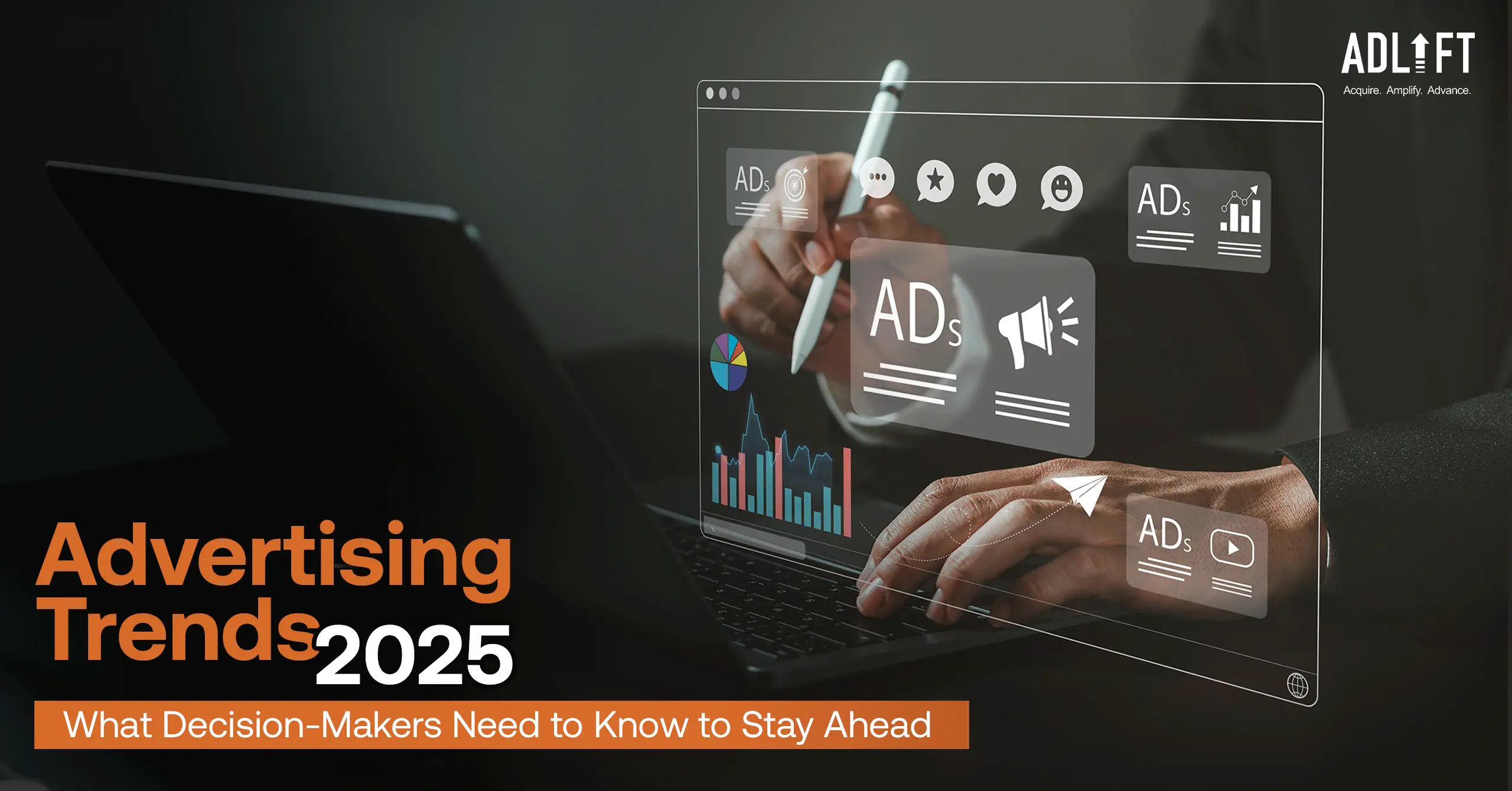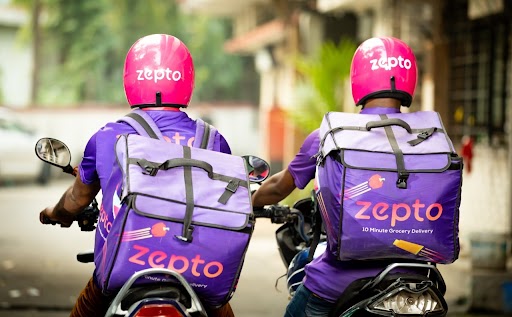Advertising Trends 2025: What Decision-Makers Need to Know

The advertising industry in India is undergoing a transformative phase driven by rapid digital adoption, changing consumer behaviors, and evolving regulations. In 2025, India’s advertising landscape will be shaped by innovative technologies, the rise of quick commerce (q-commerce), and a growing emphasis on localized, culturally relevant campaigns. Are Indian decision-makers prepared to navigate these changes?
This blog explores the advertising trends 2025 specific to India, focusing on the growth of digital advertising, the impact of q-commerce, and the challenges posed by new regulations. We’ll also provide actionable insights to help businesses stay ahead in this dynamic market.
The Big Picture – Trends in the Indian Advertising Industry
Overview of Advertising Trends 2025
India’s advertising expenditure (AdEx) is projected to grow at a CAGR of 10.5% from 2023 to 2025, reaching ₹1.25 trillion by 2025, according to GroupM’s This Year, Next Year report. Digital advertising will account for over 50% of this spend, driven by the increasing penetration of smartphones and affordable internet.
Key trends in advertising include:
- Hyper-localization: Brands are creating region-specific campaigns to resonate with India’s diverse audience.
- AI-driven personalization: With over 700 million internet users, Indian brands are leveraging AI to deliver personalized ads. Flipkart, for instance, uses AI to recommend products based on user behavior, resulting in a 20% increase in conversion rates
Why It Matters
These advertising industry trends are critical for businesses looking to capture the attention of India’s digitally savvy consumers. Personalized and localized campaigns can improve engagement rates by up to 40%, according to a report by EY.
The Rise of Q-Commerce and Its Impact on Advertising
Q-Commerce AdEx Growth
Quick commerce (q-commerce) is revolutionizing retail in India, with platforms like Blinkit, Zepto, and Swiggy Instamart leading the charge. By 2025, the q-commerce market is expected to reach $5.5 billion, and advertising on these platforms is becoming a key focus area
- In-app ads: Q-commerce platforms are offering brands the opportunity to advertise directly within their apps. For example, Zepto has partnered with FMCG brands like Hindustan Unilever to promote products through targeted in-app banners, achieving a 15% higher click-through rate compared to traditional digital ads
- Hyper-targeted campaigns: Q-commerce platforms leverage real-time data to deliver ads based on user location and purchase history. This ensures higher conversion rates and ROI for advertisers.
- The Rise of ad tech platforms: In a recent interview with Network18, AdLift CEO and Co-founder Prashant Puri opined “With the surge in consumer adoption, Q-commerce platforms like Zepto, Blinkit, and Swiggy Instamart have realized they’re sitting on a goldmine of first-party consumer data—purchase intent, product preferences, and real-time behavioral insights. Instead of letting Google, Meta, and Amazon own the ad revenue, they’re actively building in-house ad solutions to monetize their traffic more effectively. A prime example is Zepto’s ‘Jarvis,’ an in-house ad platform that gives brands a way to increase visibility within the app. And this makes total sense—why send traffic to external ad networks when you can own the entire funnel?”
Modern Advertisements in Q-Commerce
- Blinkit’s Flash Sales: Blinkit uses push notifications and in-app ads to promote flash sales, creating a sense of urgency and driving immediate purchases. Their campaigns have seen a 25% increase in repeat customers.
- Swiggy Instamart’s Brand Collaborations: Swiggy Instamart collaborates with brands like Coca-Cola and Nestlé to offer exclusive discounts, advertised through personalized notifications. This strategy has boosted sales by 30% for partner brands.
Sustainability and Brand Purpose in Indian Advertising
Emergence of Conscious Consumerism
Indian consumers are increasingly prioritizing sustainability and social responsibility. A 2024 survey by Kantar revealed that 68% of Indian consumers prefer brands that align with their values. Transparency, accountability, traceability, and environmental accountability. A recent Deloitte report indicates that 91% of Indian business leaders have increased their investments in sustainability over the past year, despite challenges such as limited sustainable solutions and difficulties in measuring environmental impact. This shift is primarily driven by heightened climate awareness, with 87% of Indian CXOs expressing consistent concern about global warming
Why It Matters
Purpose-driven campaigns not only build brand loyalty but also differentiate businesses in a competitive market. In 2025, brands that fail to align with consumer values risk losing relevance.
Challenges and Opportunities for 2025
Challenges
- Data Privacy Laws: India’s Digital Personal Data Protection Act (DPDPA), enacted in 2023, imposes strict regulations on data collection and usage. Advertisers must ensure compliance while maintaining effective targeting strategies. Non-compliance can result in penalties of up to ₹500 crore.
- Ad Fraud: With the growth of digital advertising, ad fraud has become a significant concern. According to the MMA India Fraud Report, 25% of digital ad spend in India is lost to fraudulent activities.
Opportunities
- Leverage AI for Compliance: Use AI tools to ensure compliance with data privacy laws while still delivering personalized ads. For example, AI-powered platforms like Adobe Experience Cloud are helping brands navigate these regulations effectively.
- Invest in Q-Commerce Advertising: Partner with q-commerce platforms to reach consumers at the point of purchase. Brands like PepsiCo have seen a 20% increase in sales through targeted q-commerce campaigns.
- Focus on Regional Content: Create campaigns in regional languages to connect with India’s diverse audience. Brands like Amazon and Netflix have successfully used regional content to boost engagement by 35% (Forbes India, 2024).
Conclusion
The advertising trends 2025 in India highlight the importance of digital innovation, q-commerce, and purpose-driven campaigns. By embracing these trends and addressing challenges like data privacy and ad fraud, Indian businesses can unlock new growth opportunities.
Ready to future-proof your advertising strategy? Partner with AdLift to navigate India’s evolving advertising landscape.
FAQs
What is the projected growth of India’s AdEx by 2025?
India’s AdEx is expected to grow at a CAGR of 10.5%, reaching ₹1.25 trillion by 2025.
How is q-commerce impacting advertising in India?
Q-commerce platforms are offering in-app ads and hyper-targeted campaigns, enabling brands to reach consumers at the point of purchase.
What are the key challenges for advertisers in India?
Challenges include compliance with data privacy laws, ad fraud, and the need for regional content.
How can brands leverage AI in advertising?
AI can be used for personalized targeting, compliance with data privacy laws, and optimizing ad performance.
Why is sustainability important in Indian advertising?
Indian consumers increasingly prefer brands that align with their values, making sustainability a key differentiator.


